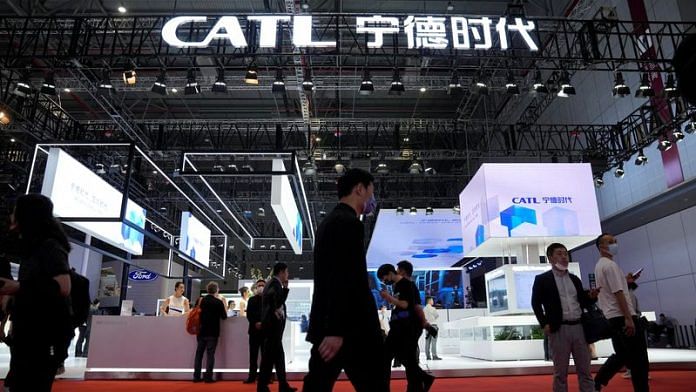China’s push to revive its economy in 2023 has a central theme of circumventing the middle-income trap, which the world’s second-largest economy now faces.
Japan, South Korea, and Singapore have escaped the trap by reskilling their population and becoming innovation-driven economies. China has taken a more aggressive approach to sector-oriented investment to improve the economy’s overall productivity. But the current geopolitical environment isn’t conducive to its plans of escaping the middle-income trap.
“The coming five years will be a crucial period in China’s endeavour to become a modern socialist country in all respects and to achieve breakthroughs in realising high-quality economic development. The main goal…is to elevate per capita GDP to the level of moderately developed countries,” said Wang Yiming, vice-chairman of China Centre for International Economic Exchanges.
Other experts agree with Wang’s assessment that the next few years are going to be crucial if Beijing is stuck in the middle-income trap as growth rate slows.
“You need to see a country remain a middle-income case for many years – and China really only became a middle-income country in 2012-13. In the next five to seven years, we should have a much clearer idea of what China’s trajectory is likely to be,” said George Magnus, an associate at Oxford University’s China Centre.
In 2020, China’s per capita GDP was $10,400 and reached roughly $12,556 in 2021, according to the World Bank. “The average per capita income in developed nations is around $48,000. Excluding some small-sized economies, the figure is still $35,000 to $40,000,” wrote Wang Yiming.
If China were to escape the middle-income trap, it would need to increase its total factor of productivity to join the club of high-income countries – which remains dismal.
Also read: US spying leads China to drastically change espionage law. It means more control on citizens
Tied by its own actions
The transition from a manufacturing-driven economy to an innovation-driven economy will require retraining workers. But that will not be easy – there are multiple fault lines.
Unlike the rhetoric about Vietnam replacing China, the Chinese companies have themselves looked for ways to cut manufacturing costs by moving to Vietnam for the last decade – which has only intensified since the US-China tensions escalated.
The push by China’s own companies to offshore manufacturing in Vietnam has raised concerns among Chinese workers who are already struggling in the post-Covid jobs market.
The offshoring effort is being driven by the provincial government where the big Chinese companies contribute significantly to local growth. But these companies are more interested in maximising their profit rather than reskilling their workers. The disconnect between what the central government in Beijing desires and the policies being pursued by local governments to promote their local companies can sometimes be at odds.
The low skilled factory workers who are now unemployed are going to be a liability as barriers exist for them to learn new skills.
Wang Xing, a sociologist, links the lack of stable housing as the root cause of Chinese businesses’ inability to retrain their employees. Housing prices have shot up even in urban villages, which allow workers to find relatively affordable housing, making them move from one job to another.
“Precarious living circumstances often push workers into more flexible forms of employment. Deprived of stable housing and discriminated against by urban welfare systems, migrant workers have no way of putting down roots in the city, which in turn makes it hard for them to receive long-term technical training from a single employer,” wrote Wang Xing.
Wang discovered in a survey that almost 61 per cent of the Chinese companies hadn’t even established an internal training program as the companies believed their rival would poach its employees if given advanced training.
Growing anxiety among young people – from those with college degrees and those without one – can be seen among those lined up outside the temples in China. The educated youth are trying to find solace in the temple, as almost a fifth of the high-educated are unemployed. There has been a 310 per cent increase in temple visits this year as compared to 2022, according to travel booking platform Trip.com.
Also read: Finance to tech, Xi bringing key sectors under CCP control. He wants to deal with US better
Getting priorities wrong
Not just a lack of jobs, but Xi Jinping’s quest to transform China into an innovation-driven economy is facing other hurdles as the US’s curbs on technology sharing – complicating Xi’s plans to push China into a higher income club.
“While China-US decoupling in the tech sector is expected to become a reality, whether or not it will extend to other fields remains to be seen, which adds uncertainty to China’s economic development,” wrote Wang Yiming.
The middle-income trap is a peppy and racy new money club that countries like Japan have found themselves in the past. You know you have got things going for yourself but levelling up to the big boy’s club requires a strategy – that’s where China finds itself stuck today.
The problem is also that China has managed to pick a tiff with a significant number of countries.
All three major Asian countries – Japan, South Korea, and Singapore – managed to escape the middle-income trap in the past by tying themselves to Washington’s economic agenda in the region. China is seeking to escape the middle-income trap while challenging the US’s security and economic architecture in Asia – which has several major East Asian economies tied together. Beijing can’t escape the middle-income trap in the current geopolitical environment.
The author is a columnist and a freelance journalist. He was previously a China media journalist at the BBC World Service. He is currently a MOFA Taiwan Fellow based in Taipei and tweets @aadilbrar. Views are personal.
(Edited by Prashant)



